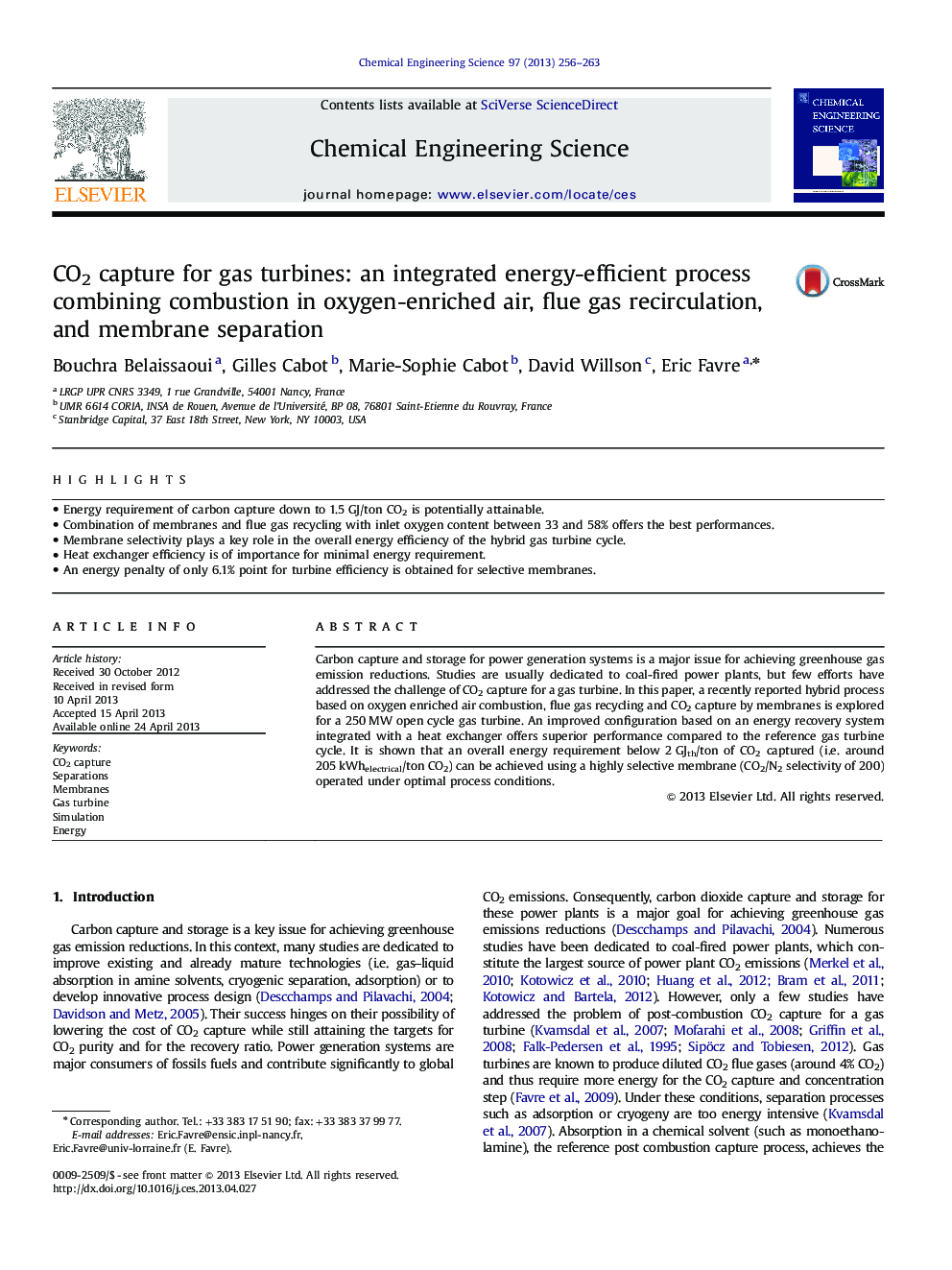| Article ID | Journal | Published Year | Pages | File Type |
|---|---|---|---|---|
| 155197 | Chemical Engineering Science | 2013 | 8 Pages |
•Energy requirement of carbon capture down to 1.5 GJ/ton CO2 is potentially attainable.•Combination of membranes and flue gas recycling with inlet oxygen content between 33 and 58% offers the best performances.•Membrane selectivity plays a key role in the overall energy efficiency of the hybrid gas turbine cycle.•Heat exchanger efficiency is of importance for minimal energy requirement.•An energy penalty of only 6.1% point for turbine efficiency is obtained for selective membranes.
Carbon capture and storage for power generation systems is a major issue for achieving greenhouse gas emission reductions. Studies are usually dedicated to coal-fired power plants, but few efforts have addressed the challenge of CO2 capture for a gas turbine. In this paper, a recently reported hybrid process based on oxygen enriched air combustion, flue gas recycling and CO2 capture by membranes is explored for a 250 MW open cycle gas turbine. An improved configuration based on an energy recovery system integrated with a heat exchanger offers superior performance compared to the reference gas turbine cycle. It is shown that an overall energy requirement below 2 GJth/ton of CO2 captured (i.e. around 205 kWhelectrical/ton CO2) can be achieved using a highly selective membrane (CO2/N2 selectivity of 200) operated under optimal process conditions.
